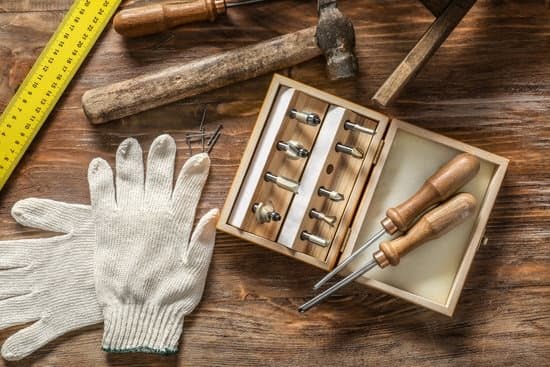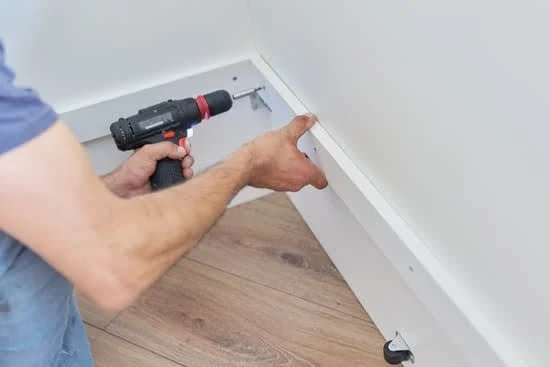Introduction
Shiplap joints are an important type of woodworking joint known for its effective strength and resistance to movement. Primarily used in carpentry, shiplap joints are created when two edges of material are overlapping each other and joined together with fasteners. This joinery method is most commonly used for wall cladding and is a popular choice for construction projects due to its durability and ease of installation.
The joinery method dates back to the 15th century when it was first used in shipbuilding, hence the name ‘shiplap’. This type of joinery creates a tight seal between the two pieces of material which is able to withstand any water-related distress due to its strong connection points. It also allows some slight movement in the walls without compromising structural integrity since the overlap gives room for some shifting while still providing stability.
This simple but robust connection has become exceptionally popular in modern hardware practices due to its great joint holding power and good water resistance qualities. Shiplap joints are now produced using power tools, such as circular saws, instead of hand-cutting or sawing which makes installation much faster than it previously was. The wide availability of shiplap materials has increased its utility even further by allowing users to easily find pre-manufactured pieces that can be installed with minimal effort.
History of Shiplap Joints and their Practical Uses
The construction art of shiplap joints has a long, rich history in woodworking stretching back to the Bronze Age. This type of joint is used widely in boat making because it provides superior strength and reduced surface area for better water resistance. Being that boat building requires the use of varying thicknesses of wood, shiplap joints have proven very useful in also providing variable angles between boards.
Today’s practical uses for this type of joint are equally versatile and its popularity is growing once again due to modern advances in materials and tools. Shiplap meets the needs of builders who require both precision and strength in a joint without having to rely on nails or other metal fasteners. Additionally, shiplap allows walls to be installed with ease while also supporting their weight better than using screws alone. It can be inserted between two pieces of wood allowing boards to expand and contract which reduces the risk of cracking due to moisture changes or temperature fluctuations—for example, during seasonal extreme weather. Furthermore, walls secured by shiplap make it easy to update any room by simply removing a few planks without needing to dismantle an entire wall section. And with improved carpentry techniques, shiplaps can even be used with plywood or particle board which offer greater stability since the joint will be hidden from view behind these substrates.
Step-by-Step Guide to Making Shiplap Joints
1. Start by preparing your tools by checking to make sure they are in good working order and that they are sharp. You can use a saw, a router, or both to cut the shiplap joint.
2. Mark out the desired joint on the wood with a pencil and make sure it is consistent across all pieces of wood you plan to join together before you begin making any cuts.
3. To create the lap joint with a saw, carefully cut down the length of the wood leaving about 1/4” allowance for wood movement when in place so it won’t be too tight and buckle later on. Be careful not to cut too deep as this could weaken the joint.
4. When using a router to make your lap joints, take care to route both slots evenly so they fit properly without gaps or binding when connected together. Make sure each slab is routed slightly different from other slabs joining them so they will Lock-Together when assembled. Use feather-shaped boards for best results if possible when using this method of joined connection
5. Confirm all measurements before inserting pins into each lap joint ensuring that each board is able to Slide-Together properly securing them together securely enough to remain rigid when assembled but also allowing some flex depending on your finished design requirements and uses of its end product after finishing is complete.
6. Lastly, sand down all edges of your lap joints smooth before applying finish if desired to get an even professional look after completion
Materials and Components Needed to make Shiplap Joints
Shiplap joints are a traditional woodworking technique used when joining two overlapping pieces of wood. It uses the tongue-and-groove process, which involves cutting each piece to fit together like interlocking puzzle pieces. When put together, this joint creates a tight, waterproof seal that stands up well over time and can be used in many different applications. To create shiplap joints you will need several materials and components to succeed in constructing a strong connection.
Here is a brief list of some essential components necessary:
1. A panel saw – Panel saws are specially designed to make straight cuts in materials, especially larger objects such as walls, creating an even edge and making sure the two sides fit tightly together.
2. Chisels – Chisels can be used for creating specific angles or shapes on pieces of wood so that it can easily fit into the other piece and provide a snug fit with no gaps.
3. Wood glue – Wood glue provides an extra level of support to the joint by sealing all surfaces and preventing moisture from entering through any hairline cracks or gaps.
4. Clamps – Clamps are essential for keeping two parts in alignment while the glue dries, ensuring secure attachment of each detail in place during assembly and preventing binding once it’s finished.
Different Methods and Techniques to Create Shiplap Joints
Shiplap joints are a type of woodworking joint used to join two pieces of material together. It is often used in carpentry, particularly in the construction of panels and doors. The typical joint includes one or more tongues cut into the edge of one board that fit into corresponding grooves cut into the adjacent board. Generally, shiplap joints are secured by inserting pins or nails through the tongue and into the groove of the adjacent board.
Various methods and techniques can be used to create shiplap joints depending on the skill level of the craftsman. For novice carpenters, pre-made miter boxes come with precisely cut angles that ensure accurate cutting of materials for creating conventional shiplap joint edges. More experienced carpenters may use a table saw to fine-tune cuts for each shiplap joint according to desired depth and width using dado blades or rabbeting bit sets. Additional techniques such as using router bits for lap joint cutting can also be employed for experienced woodworkers. Furthermore, using an oscillating flush-cut saw is recommended when dealing with awkward places on decking areas for precision cutting where other tools cannot reach easily.
Advantages and Disadvantages of Shiplap Joints in Woodworking
Shiplap joints are a type of woodworking joint traditionally used in the construction of wooden items such as ships, homes, barns and furniture. The joint consists of overlapping pieces of wood that create durable and strong joins. This type of join is still widely used today due to its strength and ease of assembly.
Advantages:
The shiplap joint require only simple tools to construct which makes it affordable for many types of projects. It also creates an aesthetically pleasing look as the overlapping pieces give the finished product a unique “clapboard” effect when properly placed. In comparison to other joints like finger or mortise & tenon, shiplap provides superior structural integrity due to its high resistance against weathering and tension loads.
Disadvantages:
Shiplap requires more time to put together than other joinery because of how much work it takes to connect each piece. There can also be some issue with inconsistency in the finished product if the pieces do not match perfectly during the installation process. Finally, since this type of joinery relies heavily on glue and nails, it may not be as reliable when compared with steel fasteners like screws or rivets.
Tips and Tricks to Make the Perfect Shiplap Joints
Shiplap joints are an efficient and easy way to join two pieces of wood while providing a sleek aesthetic. They are great for building walls, cabinetry, furniture, and more. To make the perfect shiplap joint, follow these tips and tricks:
1. Before measuring and cutting the lumber, it is important to ensure that all edges are straight and smooth so that the joint fits properly. Sanding down any rough spots or bumps can prevent problems when assembling the joint.
2. When installing the shiplap joints, use clamps to hold the pieces in place until completely fastened together with nails or screws. This will help keep them in position while you work on them.
3. Take time when nailing or screwing into the joint – make sure there is no overlap between holes and that all nails/screws are driven in straight so that they do not damage the wood fibers over time. Otherwise, this could lead to cracking and splitting later on down the line.
4. Use quality adhesives as extra measure of prevention from loosening up during extreme temperature changes. This will provide extra stability and strength while also reinforcing a tight connection between surfaces of different materials if necessary (e.g., wood/metal).
5. Finally, finish off any gaps with wood filler at the corners or joint lines for a cleaner look once fully assembled – use a wide putty knife to apply evenly after letting it dry overnight for best results!
Safety Precautions to Take When Working with Shiplap Joints
When working with Shiplap joints it is important to take safety precautions to protect yourself and others.
1. Wear proper clothing such as long pants, closed-toe shoes, and eye protection like goggles or a face shield.
2. Always unplug power tools when performing maintenance or making adjustments.
3. Make sure the material you are cutting is properly clamped so it does not slip or fall when cutting with circular saws or hand saws. A table saw should also be used on a stable surface enough to handle the weight of the material being cut in case the blade slips from the piece being worked upon.
4. Wear a dust mask whenever operating equipment that generates airborne materials like sawdust and chips, which can be hazardous if inhaled.
5. When cutting joints with jigsaws, utilize an appropriate speed for the material thickness and ensure you have sufficient control as this type of tool tends to vibrate more than others, increasing risk of injury if not handled with proper caution and stability.
6. Use caution when using glue, ensuring not to get it on your skin as it can cause irritation depending on its strength and intended purpose; followed closely by keeping your work area clean in order to avoid any potential tripping hazards created by finished product scatterings due to slippery surfaces after application of this substance is complete – even then do not rush as these areas ought to still be avoided until drying has been completed entirely as well before any furniture pieces are moved away from access point locations previously utilized during shiplap construction process itself..
Examples of Shiplap Joints in Different Woodworking Projects
Shiplap joints are a type of woodworking joint that is used to join two or more planks or boards together. This type of joint is created by cutting slots into the edges of the boards and then inserting a tongue-and-groove piece at the end of each one. The groove allows for the boards to fit snugly together, while the tongue helps hold them in place. Whether used as a decorative element or as part of structural support, shiplap joints can be an effective way to make furniture, walls, doors and more look beautiful and sturdy.
Common uses for shiplap joints include building fences, shelves, roofing and siding materials, paneling on walls, and cabinets. This type of joint also has applications in boatbuilding, providing a flush surface when attaching two pieces together. Shiplap connections have also been used in structures since antiquity for their strength and durability – for example stone structures such as those on Easter Island often use shiplap connections to keep individual stones connected and secure.
Modern furniture makers often use shiplap joints in desks, dressers, tables, chairs and other pieces requiring joints that are both structurally sound and aesthetically pleasing. In addition, many hobbyists find shiplapping desirable for creating birdhouses or raised garden beds out of planks versus using nails or screws alone. Homeowners may also opt for this style if they would like to give their interior walls and ceilings a rustic charm with DIY paneling projects made from pallets or other found wood material sources. By combining the strength of these joints with aesthetically pleasing materials such as wood paneling or barn wood siding panels on an exterior wall surface can provide potential buyers with a unique home on the real estate market.
Conclusion
Shiplap joints are essential for woodworking projects no matter how simple or complex. These reinforced slots are a great way to join two boards together, making them incredibly strong and durable. The edge of the boards that are joined must be rounded and rabbeted to match the slot created in the other board. This produces a seamless connection between the pieces that would otherwise be difficult to complete without special tools. With these unique joints, it’s possible to create intricate designs with clean lines that look professional and add value to any craft project. Whether you have an entire shed to construct or just some furniture repair, you can rest assured knowing your creation will maintain its integrity if shiplap joints were used for assembly. They make woodworking easy, efficient and effective; when used properly, they can provide decades of lasting service.

Hi everyone! I’m a woodworker and blogger, and this is my woodworking blog. In my blog, I share tips and tricks for woodworkers of all skill levels, as well as project ideas that you can try yourself.





